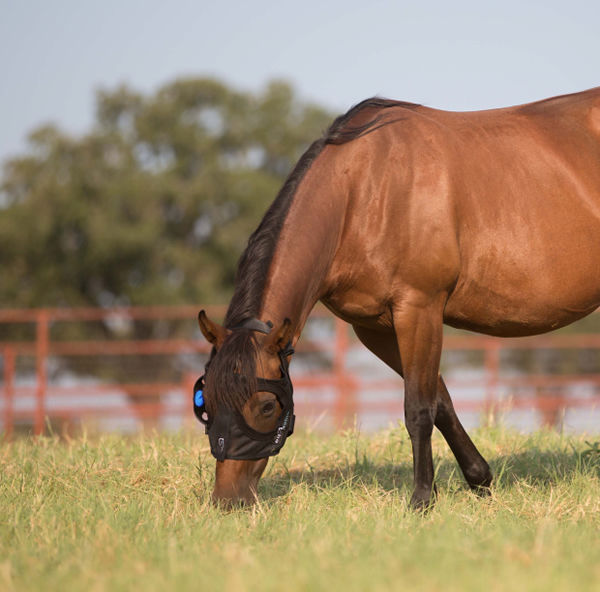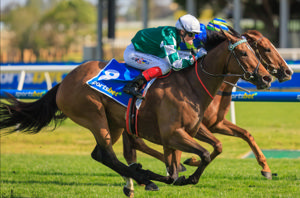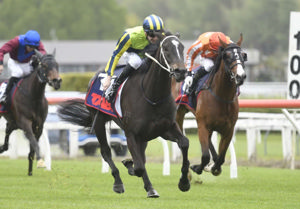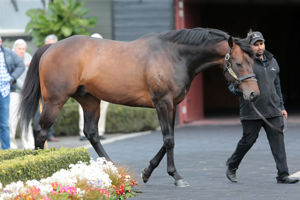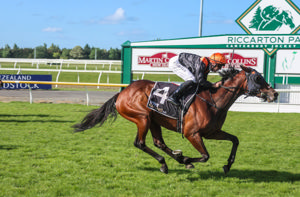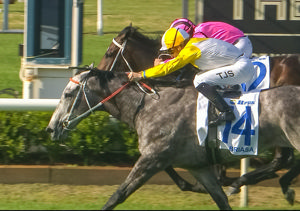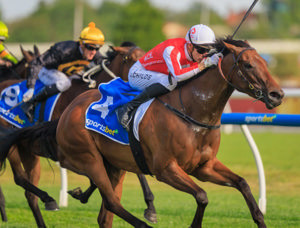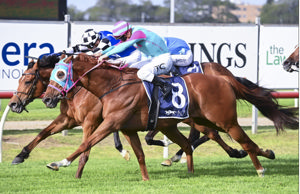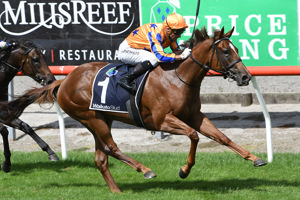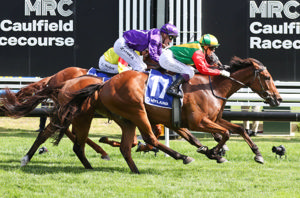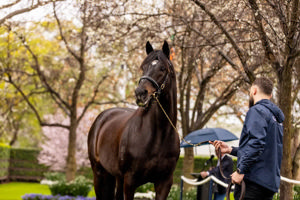The horse’s natural reproductive period coincides with the light-filled days of summer, so the desire to breed mares early in the year means that many foals are born at a darker time of year than Nature intended.
This has consequences for breeding efficiency. Often, early foaling mares experience longer gestations, have smaller foals and can have trouble cycling post-foaling.
As well as hormones that control reproduction, lengthening daylight stimulates important growth hormones that allow foals to mature in utero and mares to produce more milk and good colostrum.
Specifically, it is the blue light wavelengths from the sun that drive these seasonal hormonal changes.
For successful breeding outcomes, timing is everything. In the Thoroughbred sector, early ovulations mean the production of early season foals and increases the economic value of youngstock.
Successful manipulation of the light cycle, the primary regulator of reproduction in horses, has permitted the advancement of the mare’s breeding season to meet industry timelines. By extending the mare’s daily exposure to artificial light from end of June to early July, reproductive activity is brought forward and the breeding sheds are busy from September each year.
While there is less economic pressure to produce Sport Horses early in the season, timely conceptions mean less disruption of competition schedules, reduced workload managing multiple cycles and increase the chances of success using valuable semen.
However, improving breeding efficiency is not limited to achieving early conceptions or increasing the number of embryos collected per cycle. Gestation length, post-foaling fertility, re-breeding intervals and foal maturity at birth are important factors for breeders.
New research presented at the Equine Symposium of the British Society for Animal Science’s 2021 Conference showed that pregnant mares fitted with blue light masks that extend natural daylength in the final 100 days of gestation had shorter pregnancies, earlier post-foaling ovulations and more mature foals at birth.
The exciting studies, conducted by Professor Christine Aurich and her research team at the University of Veterinary Medicine in Vienna, Austria, also found that foals from mares wearing blue light masks in the final months of pregnancy stood 15 minutes faster after birth than foals born to mares that did not receive additional light.
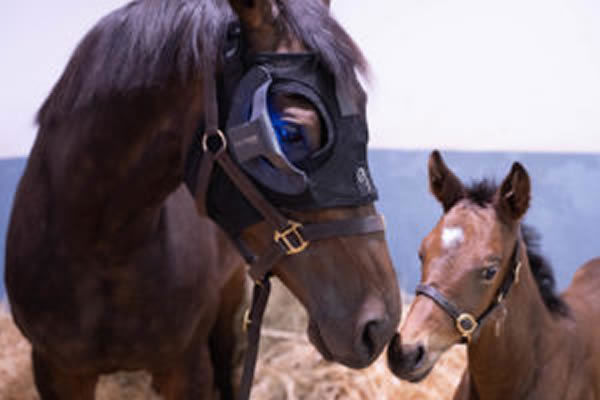
The two-year study was conducted using warmblood mares at the historic Brandenburg State Stud in Germany.
The mares wearing Equilume light masks, a product scientifically developed at University College Dublin and produced in Naas, Co. Kildare, were observed to develop larger follicles in the late stages of pregnancy and could be bred sooner after foaling.
The foals born from mares wearing light masks were also observed to have shorter hair coats, demonstrating that the light signal perceived by the pregnant mare was being communicated to the foal and appears to have influenced their physical development in utero.
Importantly, despite shorter pregnancies, birth weights were not impacted and blood profiles determined that these foals were more mature at birth than foals from the control group. The initial findings from this research have been published in the leading international scientific journal Domestic Animal Endocrinology and can be accessed by clicking here.
The Equilume light mask was developed at UCD by Dr Barbara Murphy and Prof John Sheridan following years of pioneering research.
Scientific studies confirmed that extending daylength for dry mares using low intensity blue light delivered to just one eye could advance reproductive cycles as effectively as stable lighting, with the bonus that mares can be kept at pasture.
Blue light treatment for dry mares should begin approximately two months prior to the start of the breeding season, and for pregnant mares the researchers advise that light masks should be fitted three months before the foaling due date.

